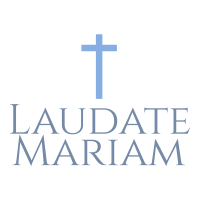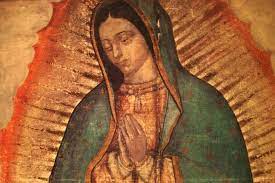The Feast of Our Lady of Guadalupe is celebrated every December 12. Did you know that Our Lady of Guadalupe is actually the Patroness of the Philippines? On July 16, 1935, Pope Pius XI declared Our Lady of Guadalupe patroness of the Philippines via the bull Romani Pontifices. The Blessed Virgin, under this title, was appointed Heavenly Patroness of the Philippine Islands.
Below is the story of Our Lady of Guadalupe, Patroness of our country.
***
The arrival of the Spanish conquistadores led by Hernando Cortes to the New World on 12 March 1519 heralded the fall and conquest of the Aztec empire. At that time, there were yet no boundaries dividing Latin America. Cortes and his men landed in the port of Vera Cruz which is part of what is now known as Mexico. This ushered the evangelization of the natives and established the Church in the Americas. The natives were at that time exercising a pagan religion dedicated to idolatry and human sacrifices.
After many difficulties that caused the loss of lives and properties to both the natives and the conquerors, Cortes and his men, with the help of priests and missionaries sent from Spain, were able to gradually convert many of the Aztec Indians to Christianity.
Who is Juan Diego?
Early one morning on 9 December 1531, a man by the name of Juan Diego was walking towards Tlatilolco (now Mexico City), about 14 miles from where he lived. He was a native Mexican Indian from a tribe that had always lived in Mexico long before the Aztecs conquered the empire in 1325.
When the first group of missionaries arrived in 1924, the members of Juan Diego’s family were among the first to be converted. He, his wife and uncle were baptized. They all took Christian names, Juan Diego, Maria Lucia and Juan Bernardino respectively and received instructions in the faith. The family was known to belong to the middle class. They had a successful mat-making business and owned lands. Because of this, Juan Diego had the benefit of a personal freedom unlike those belonging to the lower class and slaves. At the time of the apparition he was 57 years old, childless and his wife had recently died.
Juan Diego became a faithful Christian and he would walk every Sunday to go to mass and receive Holy Communion. He regularly attended religious instructions from the missionaries. In addition to Sunday mass, he would also hear mass on Saturdays which is the day dedicated to the Blessed Mother.
The Lady of Guadalupe Appears
At this, Juan bowed low before her, promised to carry out her wish, and ran to the residence of then bishop Friar Don Juan de Zumarraga. After some difficulty getting past the servants, he was allowed to enter. He told the bishop everything he saw and gave the message of the Lady. The bishop did not seem to believe him and told Juan that he will think about the matter.
Juan returned crestfallen. He found the Virgin Mary waiting. He fell down on his knees and told her that the bishop did not seem to believe him. And since he is nobody but a lowly Indian, would she send someone well known and respected instead?
But the heavenly Queen could not be dissuaded from her plans. She told him to go back the following day and tell the bishop that it is the ever Virgin Mary, Holy Mother of God who is sending him.
The following morning, after hearing mass, he went again to see the bishop and repeated the message. Still skeptical, the bishop told him to ask the Lady for a sign to prove that the message was truly from the Mother of God.
Going back, Juan relayed the message to Our Lady of Guadalupe and she said, “Fine. Tomorrow you will return here so that you may take the sign to the bishop. Then he will no longer doubt or be suspicious of you. Tomorrow, I will be waiting for you.”
The Dying Uncle
However, upon arriving home, he found his uncle, Juan Bernardino, gravely ill. The following day, his condition was worse. The native healer was called but was helpless to do anything. Juan, worried and preoccupied with taking care of his gravely ill uncle, missed his appointment with the Lady of Guadalupe that morning. That night, the dying uncle asked his nephew to go early in the morning to fetch a priest who will hear his confession and prepare him for death.
Early the next morning of 12 December 1531, Juan Diego, downhearted about his uncle’s condition, set out to call a priest. As he approached Tepeyac Hill, he remembered his failure to honor his appointment with the Lady of Guadalupe – if he encounters her now, he will surely be detained. In order to avoid meeting her, Juan went around the other side of the hill, hoping he can escape the Lady for a while and do his urgent errand. But as he was walking the other path, he suddenly heard a voice and saw the Lady of Guadalupe blocking his way, “Juanito, my son, where are you going?”
The Sign of the Lady of Guadalupe
Juan Diego was filled with shame and remorse. He asked her forgiveness, telling her that his uncle was dying and that he was going to call a priest to give his uncle the last rites. But the Lady of Guadalupe smiled and told him:
Do not trouble your heart, for this thing that bothers you is nothing. Am I not here, your Mother? Are you not under the shadow of my protection? Are you not in the hollow of my mantle? Are you not in the embrace of my arms? What more do you want? Be certain at this very moment, your uncle is well and fully recovered.”
At that very moment, she also appeared to the uncle who was immediately restored to health as Juan was to learn later.
Upon hearing this, Juan begged the Virgin Mother to give him the sign to bring to the bishop. She told him to go up the summit of the hill and gather the flowers growing there. Upon reaching the top, Juan was mesmerized at what he saw!
In the dead of winter and biting frost, on an arid hill where the earth was stony and nothing but thistles and thorny plants could grow, Juan Diego saw a profusion of sweet-smelling colorful flowers, many of them Castilian roses, in full bloom and studded with pearly dew. Here was the miracle for the bishop! Juan Diego cut and gathered some of the flowers and placed them inside the fold of his tilma.
What is a tilma?
The tilma is a big cape or shawl usually reaching down the knees, worn by the Indian natives of Mexico. It is a part of their native attire, worn primarily to protect them from the cold. It is usually woven out of fibers from maguey and cactus plants and often dyed with vibrant colors. The tilma Juan Diego was wearing on that early morning was of coarse maguey fibers, probably not dyed because it was light beige or ecru. The tilma is worn like a shawl tied at the neck or the shoulder to hold it in place.
After gathering the flowers, Juan Diego turned the tilma toward the front of his body, placed the flowers in it, and gathered both the right and left ends close to his body. He went back to our Lady of Guadalupe who arranged the flowers in the tilma with her own hands.
Holding the tilma close to his chest, Juan Diego hurried to the bishop’s residence once more. Now, he had a harder time convincing the doorkeeper and other servants to let him in. First, the bishop was entertaining some guests. Second, they felt he had become a nuisance to the bishop. Third, they were curious yet suspicious of what he was concealing in his shawl. A few flowers were peeking out of the shawl but when the servants tried to snatch some of them, they would immediately disappear inside the tilma! This frightened them until, eventually, they allowed Juan Diego to enter.
The Miracle of the Lady of Guadalupe Unfolds
Juan Diego bowed low before the bishop, telling him that he had brought the sign he was asking. He opened his tilma and there cascaded beautiful, fragrant, full-bloomed fresh Castilian roses in vivid colors, known only to grow in a certain part of Spain (particularly in the region where Bishop Zumarraga comes from). At that time, Castilian roses were never known to grow anywhere in the Americas.
But the Castilian roses gave the bishop only a momentary jolt. He was staring at the tilma with an unfathomable expression – a mixture of awe, disbelief, astonishment and reverence. When Juan Diego looked down, he too was dumbfounded at what he saw. There, in living color on his tilma, was the beloved image of our Lady of Guadalupe in the form and figure she appeared in to Juan Diego.
The image was seen in detail by everyone in the room: a beautiful lady somewhat dusky in complexion, slightly looking down to her right, dressed similarly like the women of the Middle East where she comes from. But what was amazing and unique was that “she was standing on a crescent moon, the hem of her dress held by an angel. She was surrounded by rays of the sun, with stars all over her cloak, designs of different flowers in her tunic, and the clouds seeming to disperse at her approach.”
At the sight of this miraculous image of the Holy Mother, the bishop and everyone in the room fell on their knees, all of them praying, most of them weeping, their minds and hearts in ecstasy. The bishop, with tears flowing down his cheeks, asked the Blessed Mother to forgive him for his initial doubts. He asked Juan Diego to stay with him in his residence and the next day, they went to the place on Tepeyac Hill where construction of the house of God was to be started.
The Lady of Guadalupe Paints Her Own Image
Juan Diego became the caretaker of the church and of the tilma carrying the image of our Lady of Guadalupe.
The Mother of God left an image of herself – a portrait that has been vouched for by numerous scientific experiments as one that was not done by human hands, using coloring from unknown pigments not found on this earth.
While tilmas of the same kind, or even of finer and stronger quality, deteriorate after a few years, the tilma and the image on it has remained the same as it was 479 years ago. This miraculous image on the ancient yet ever-new tilma now hangs in the Basilica of Mexico City and continues to be venerated by millions and millions of pilgrims through the centuries. Countless miracles have been attributed to her intercession since the time the tilma was first exposed to the public in the Lady of Guadalupe's “little house of God” on Tepeyac Hill.

